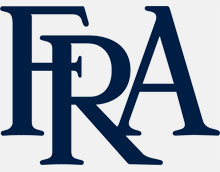Using Voice Tracker I array microphones in Court for sound reinforcement as well as proceedings recording.
Getting microphone coverage in a courtroom is a challenging task. Depending on the type of proceeding, coverage may be needed not only at the Judge’s bench, Witness chair, and Attorney tables, but coverage may also be required at the Jury box for Jury polling, or at the Gallery for Voir Dire (Jury selection).
Historically this was accomplished by using large numbers of goose neck, wireless or ugly hanging microphones, combined thru elaborate mixing systems.
The automatically and electronically steered listening beam of the Voice Tracker I array microphone provides an economical and easily maintainable alternative.
In the hands of expert Lead Designer Martin Pilewski from Harvest Productions in North Kansas City, Missouri, Voice Tracker I array microphones not only cover the “recording gaps” in the courtroom layout, but also solve a variety of sound reinforcement needs.
An example would be the setups at the 16th Circuit Court of Jackson County Courthouses in downtown Kansas City and Independence Missouri.
One Voice Tracker I microphone is mounted in front of the witness chair. There is no gooseneck microphone for the witness to play with (and misalign or break). With the addition of a compressor in the output of the Voice Tracker, the witness can’t escape being picked up, or overpower the microphone with loud speech or coughing. The compression also provides unique gain-before-feedback capabilities, while the microphone’s beam steering provides the perfect defense against highly reverberant spaces.
Another Voice Tracker I is mounted on the ceiling near the jury box to capture questions/polling from the Jurors. Two are mounted above the left and right side of the Gallery to provide pick up of potential Jurors during Voir Dire. These three usually can cover the ground in between in case the attorneys move about. The pick up pattern of the microphones is such that anyone speaking up to 35 feet away in the pattern can be heard as if the microphone were placed directly in front of them. This eliminates the need to use wireless mics, which adds complexity to the system and suffers from the fact that sometimes their batteries run out.
Voice Tracker I’s also work well at the Judge’s bench, almost too well, as caution must be taken in the system design to be able to mute the microphone to the PA system during side-bar conversations. This rule also applies to the Attorney table’s, where more often a conventional gooseneck microphone would be used as conferring with a client could be picked up by accident. Pilewski recommends a temporary push-to-mute arrangement as Attorneys may sometimes fail to turn their mics back on after conferring, another annoyance that can easily be avoided.
The multiple Voice Trackers are powered from a single, regulated DC power supply to save real estate that would otherwise be taken up by multiple “wall warts”. Martin then converts their audio outputs to balanced via a simple transformer, and compresses their outputs to provide more controlled gain structure.
The balanced microphone outputs go to a Biamp Tesira, where Martin does just a little EQ to improve sound quality.
The audio is available in several modes for recording, as well as a hearing loop broadcast. Most of the time they are set up for FTR recording, but in Harvest Production Systems, output is available in analog, headphone and USB connections so courtroom personnel can record or transcribe them however they want. The systems are also set up for VoIP and networking.
Touch panel control systems are set up for the Judges and Clerks to provide intuitive, simple control. According to Pilewski “The sound system should be transparent, allowing people to speak and be able to hear that speech as a natural extension of the normal voice. Only the Judge should be able to be overly loud. The sound system should be a help, not a hindrance, so simple control is a must. We see way too many control systems with too small screens requiring the user to descend through several pages to get to what they need to do.”
Because the Voice Trackers are so sensitive, Martin has to be careful to eliminate feedback from the sound reinforcement loudspeakers in the courtroom. He uses a mix minus in the Biamp, and that, combined with the compression, eliminates the need for speaker feedback exterminators. Martin uses small Atlas 10 watt 1/4rack space amplifiers for the mix minus.
The economic advantage of the Voice Tracker array microphones is compelling. Four Voice Trackers cost just a little more than $1000. More importantly, all audio is captured.
Besides installing these systems in several court rooms, Pilewski has utilized Voice Tracker array microphones in board rooms for meeting recording and in medical operating rooms for a high-tech “intercom” so the operating doctors can confer with experts during the operation. Harvest Productions also uses the Voice Tracker™ II array microphone for internal videoconferencing.
“The USB version, the VoiceTracker II, is perfect for groups of people using VoIP based conferencing. When used by a group in a room, the VT II’s on-board acoustic echo-cancelling removes the need for “muting”. Simply have individuals with their own devices that join the meeting wear headphones, and the groups use the VTII, and you’ve solved your acoustic echo cancellation problems.”























